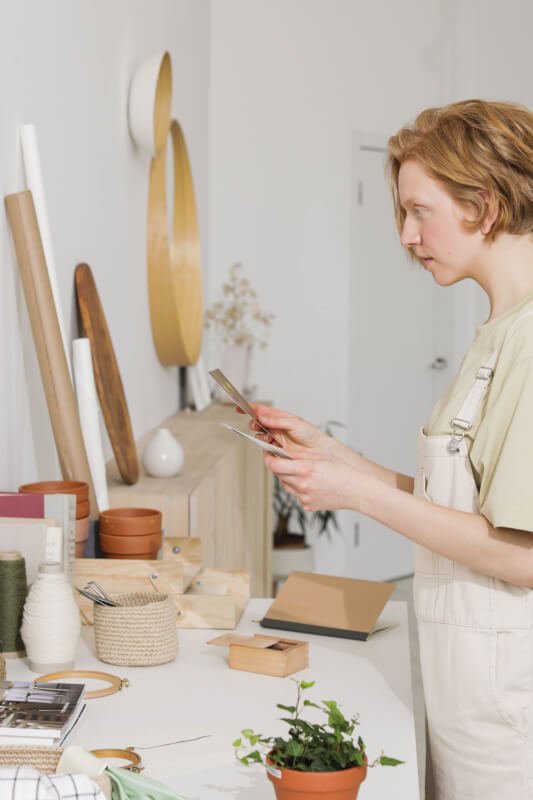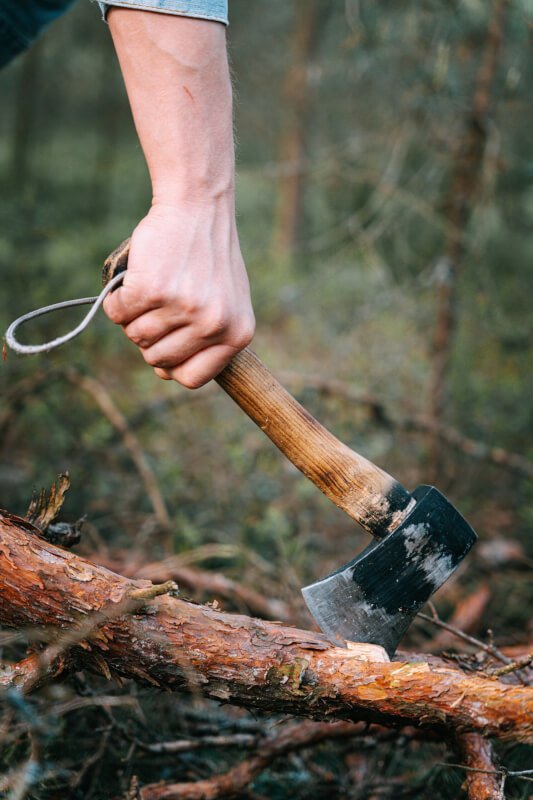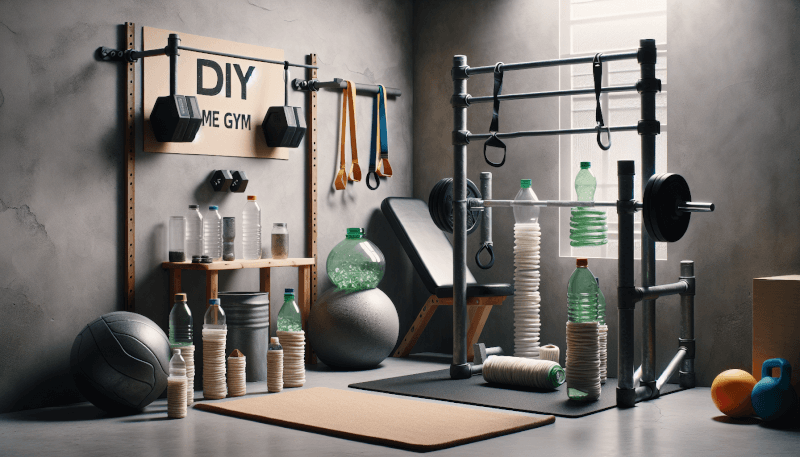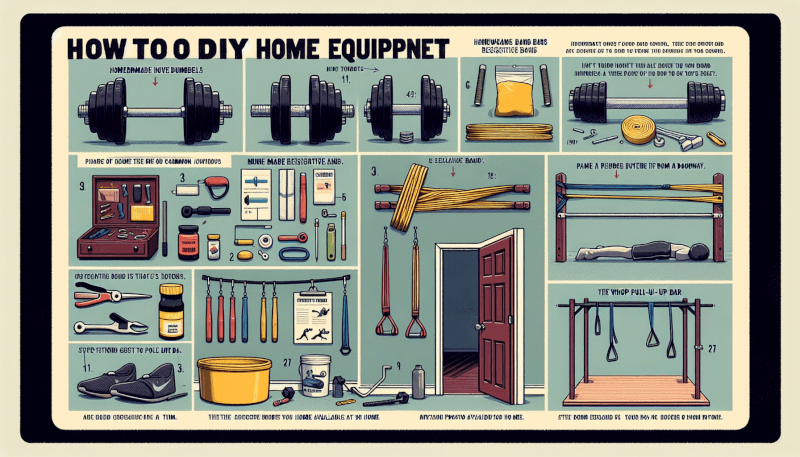Are you tired of paying expensive gym membership fees? Are you craving a convenient and budget-friendly way to stay fit and active right at home? Look no further! In this article, we will explore the best DIY home gym equipment that you can easily make yourself. With these affordable and customizable options, you can create a workout space that fits your needs and helps you achieve your fitness goals. Get ready to transform your home into a personalized gym that will inspire you to break a sweat and improve your overall well-being.
Introduction
Creating a home gym doesn’t have to break the bank. With a little creativity and some everyday household items, you can make your own DIY home gym equipment that will rival the expensive options found in commercial fitness centers. Whether you’re looking to build strength, improve flexibility, or just stay active, there are plenty of alternatives to traditional gym equipment that you can easily make yourself. In this article, we will explore the best DIY home gym equipment options, from dumbbell alternatives to foam rollers, and everything in between. Let’s get started!
1. Dumbbell Alternatives
Dumbbells are a staple in any workout routine, but they can be quite expensive to purchase. Luckily, there are several alternatives that you can make at home using simple household items.
1.1 Water Bottles
Empty water bottles can be transformed into makeshift dumbbells by filling them with water or sand. Depending on the size of the bottle, you can adjust the weight to suit your needs. Simply fill the bottles, securely close the lids, and you have a cost-effective and customizable dumbbell alternative.
1.2 Sandbags
Sandbags are another versatile option for mimicking dumbbells. You can use old duffel bags or sturdy pillowcases and fill them with sand to create weights of varying sizes. Sandbags provide a challenging workout, especially for exercises that require grip strength, such as farmer’s carries or squats.
1.3 Milk Jugs
If you have empty milk jugs lying around, they can be repurposed as dumbbells. Fill the jugs with water, sand, or gravel to reach your desired weight. The handles make them easy to grip, and you can adjust the amount of liquid or material inside to increase or decrease the resistance.

2. Resistance Bands
Resistance bands are incredibly versatile and can be used for strength training, stretching, and physical rehabilitation. While they are affordable to purchase, you can also make your own resistance bands at home.
2.1 PVC Pipe and Bands
By attaching resistance bands to a PVC pipe, you can create a simple yet effective tool for resistance training. Cut the PVC pipe to a suitable length and secure the resistance bands on both ends. This DIY version allows for adjustable resistance by using different bands and is perfect for exercises like bicep curls or tricep extensions.
2.2 Towels as Resistance Bands
If you don’t have access to resistance bands, towels can be a great alternative. Simply roll up a towel and use it as a resistance band by pulling and stretching it during exercises. Although towels may not provide as much resistance as bands, they can still challenge your muscles and add variety to your workouts.
2.3 Pantyhose Resistance Bands
Pantyhose can be repurposed into resistance bands by cutting them into sections and tying knots at both ends. These homemade bands are particularly useful for lower-body exercises, such as leg curls or glute bridges. The elasticity of the pantyhose provides resistance similar to that of commercial bands.
3. Medicine Ball Substitutes
Medicine balls are great for core training and explosive exercises, but they can be pricey. However, you don’t need to invest in a store-bought medicine ball when you can make your own substitutes with items you may already have at home.
3.1 Basketball or Soccer Ball
If you have a basketball or soccer ball lying around, it can serve as a suitable replacement for a medicine ball. The weight and size of these balls make them perfect for exercises like Russian twists or wood chops, providing the needed resistance to engage your core muscles.
3.2 Sand-filled Sock
Another simple option is to fill a sock with sand and tie a knot at the end. This DIY medicine ball substitute is ideal for exercises that require tossing or throwing motions. The size of the sock can be adjusted to increase or decrease the weight, making it a versatile option for various fitness levels.
3.3 DIY Soft Medicine Ball
For a softer alternative to traditional medicine balls, create your own soft medicine ball by stuffing a sturdy fabric, such as a canvas bag or an old pillowcase, with a filler like rice, dried beans, or plastic pellets. The soft material reduces the risk of injury during exercises and allows for a wider range of exercises, including slams and rotations.

4. Weight Bench Alternatives
A weight bench is an essential piece of equipment for various strength training exercises. However, if you don’t have access to one, don’t worry! There are a few alternatives that you can make at home to support your workout routines.
4.1 Adjustable Plywood Bench
Using a piece of plywood and some sturdy blocks, you can easily create an adjustable bench for your home gym. By placing the blocks at different heights, you can change the incline or decline of the bench to target specific muscle groups. Ensure the plywood is securely fastened to the blocks to ensure stability during workouts.
4.2 DIY Concrete Block Bench
If you have some spare concrete blocks lying around, you can stack them to create a stable bench. By placing a wooden board or a piece of foam on top of the blocks, you can make your bench more comfortable and suitable for various exercises.
4.3 Exercise Ball Bench
An exercise ball can be a versatile piece of equipment on its own, but it can also serve as a substitute for a weight bench. By carefully positioning the exercise ball and using it as support during exercises, you can engage your core muscles and add an extra level of instability to your workouts.
5. Pull-Up Bar
Pull-ups are a fantastic exercise for strengthening the back, arms, and shoulders, but many people don’t have a pull-up bar readily available at home. However, there are a few simple DIY solutions you can try!
5.1 Doorway Pull-Up Bar
One of the easiest and most accessible options is a doorway pull-up bar. These bars are designed to fit securely into most standard door frames without any permanent installation. They provide a stable platform for performing pull-ups and chin-ups in the comfort of your own home.
5.2 Outdoor Tree Branch Pull-Up Bar
If you have access to a sturdy tree branch in your backyard or a nearby park, you can use it as a natural pull-up bar. Ensure the branch is strong enough to support your weight and use caution while performing exercises. This option allows you to enjoy fresh air and nature while getting in an effective upper body workout.
5.3 DIY Wall-Mounted Pull-Up Bar
For those with some DIY skills and access to basic tools, building a wall-mounted pull-up bar can be a great option. By securely attaching a metal bar or a sturdy pipe to a wall, you can create a permanent fixture for pull-ups and other hanging exercises. Ensure the bar is properly installed and can support your weight before using it.

6. Jump Rope
Jumping rope is an excellent cardiovascular exercise that can be incorporated into various workout routines. If you don’t have a jump rope on hand, fear not! You can easily make your own using common household items.
6.1 Handle-less Towel Jump Rope
If you have a long and sturdy towel, you can fold it in half and use it as a jump rope. Although this homemade version doesn’t have handles, it still allows you to mimic the jumping motion and get your heart rate up. Ensure you have enough space and a non-slippery surface to jump safely.
6.2 PVC Pipe Jump Rope
With a few supplies from a hardware store, you can create a jump rope using PVC pipes. Cut the PVC pipe to your desired length, attach a rope or some sturdy cord through the pipe, and secure the ends. This DIY jump rope option provides a more solid grip and allows for better control while jumping.
6.3 Paracord Jump Rope
Using paracord—a versatile and durable material—you can easily craft a jump rope. Simply cut a length of paracord to your desired size, tie knots at each end, and make sure they are secure. This DIY jump rope is lightweight, portable, and can be customized to suit your preferences.
7. Yoga Mat
A yoga mat provides cushioning and stability during floor exercises, ensuring your comfort and safety. If you don’t have a yoga mat at home, there are a few alternatives you can use to create a suitable space for your workouts.
7.1 Beach Towel Yoga Mat
If you have a large beach towel or a bath towel, it can serve as a makeshift yoga mat. Ensure the towel is thick enough to provide cushioning and place it on a non-slip surface. Although it may not offer the same grip as a traditional yoga mat, it still provides some padding for your joints.
7.2 Carpet or Rug Yoga Mat
If you have a carpet or a rug with enough cushioning, it can work as a temporary yoga mat. This option is ideal for low-impact exercises or stretching routines. However, make sure the surface is clean and free from any debris that may cause discomfort or injury.
7.3 Blanket Yoga Mat
A blanket can be folded and layered to create a makeshift yoga mat. By doubling or tripling a thick blanket, you can add extra padding and create a more comfortable surface for your workouts. This option is particularly useful when practicing gentle forms of yoga or floor-based exercises.

8. Stability Ball
Stability balls, also known as exercise or Swiss balls, are excellent for core training, balance exercises, and even as an alternative to a traditional desk chair. If you don’t want to invest in a commercial stability ball, you can make your own substitutes.
8.1 DIY Stability Ball
To create your own stability ball, you can use a large, durable balloon and fill it with air until it reaches your desired level of firmness. Securely tie the balloon, and your homemade stability ball is ready for use. Ensure the balloon is inflated enough to provide stability while performing exercises.
8.2 Inflatable Beach Ball Stability Ball
A beach ball can also serve as a makeshift stability ball. Inflate the beach ball to the proper size and make sure it is firm enough to provide stability during exercises. Although this option may not be as durable or sturdy as a commercial stability ball, it can still be an effective tool for balance training.
8.3 Yoga Ball as a Stability Ball
If you already have a yoga ball, also known as a yoga exercise ball or a balance ball, you can use it as a stability ball. Yoga balls come in various sizes and can provide the same benefits as stability balls. Ensure the ball is properly inflated and can support your body weight before using it for exercises.
9. Foam Roller
Foam rollers are commonly used for self-myofascial release, also known as self-massage, to alleviate muscle tension and increase flexibility. If you don’t have a foam roller at home, there are a few DIY options you can try.
9.1 PVC Pipe and Pool Noodle Roller
By using a PVC pipe and a pool noodle, you can create your own foam roller. Cut the pool noodle lengthwise and attach it to the PVC pipe. This DIY foam roller is cost-effective, adjustable, and provides similar benefits as a commercial foam roller.
9.2 Rolled Towel Roller
If you have a thick towel or a few smaller towels, you can roll them tightly and secure them with a couple of rubber bands or a strong piece of string. This makeshift foam roller is ideal for targeting smaller muscle groups or areas that require a more gentle massage.
9.3 Tennis Ball Massage Roller
For a more targeted self-massage, you can use tennis balls. Place two tennis balls inside a sock and tie the end to create a double-ball massage roller. This DIY method allows you to control the pressure and target specific areas, such as the back, neck, or feet.

10. Suspension Trainer
Suspension trainers, such as the popular TRX system, provide a versatile and effective way to engage multiple muscle groups using your body weight. While commercial suspension trainers can be quite expensive, you can create your own at home with a few simple materials.
10.1 Homemade TRX Suspension Trainer
To make your own TRX-style suspension trainer, you will need webbing straps, a sturdy anchor point (such as a door anchor or a tree branch), and some carabiners. Attach the webbing straps to the anchor point and secure them with carabiners. This DIY suspension trainer allows you to perform a wide range of bodyweight exercises and offers the flexibility of adjustable straps.
10.2 Resistance Band Suspension Trainer
If you have resistance bands at home, you can easily create a suspension trainer by anchoring the bands to a secure point, such as a door or a sturdy pole. Make sure the anchor point is stable and can support your body weight. This DIY version provides a similar range of exercises as a commercial suspension trainer, focusing on bodyweight movements.
10.3 Paracord Suspension Trainer
Paracord can be used to make a simple and portable suspension trainer. By fastening the paracord to a secure anchor point and creating loops or handles on each end, you can perform various exercises targeting different muscle groups. Ensure the paracord is securely fastened and can support your weight before using it.
In conclusion, creating a fully functional home gym doesn’t require expensive equipment or a dedicated space. By using everyday household items and a bit of creativity, you can make your own DIY home gym equipment that is both cost-effective and effective in helping you reach your fitness goals. From dumbbell alternatives to pull-up bars and foam rollers, there are endless possibilities to explore. So, get creative, stay active, and have fun building your own DIY home gym!


